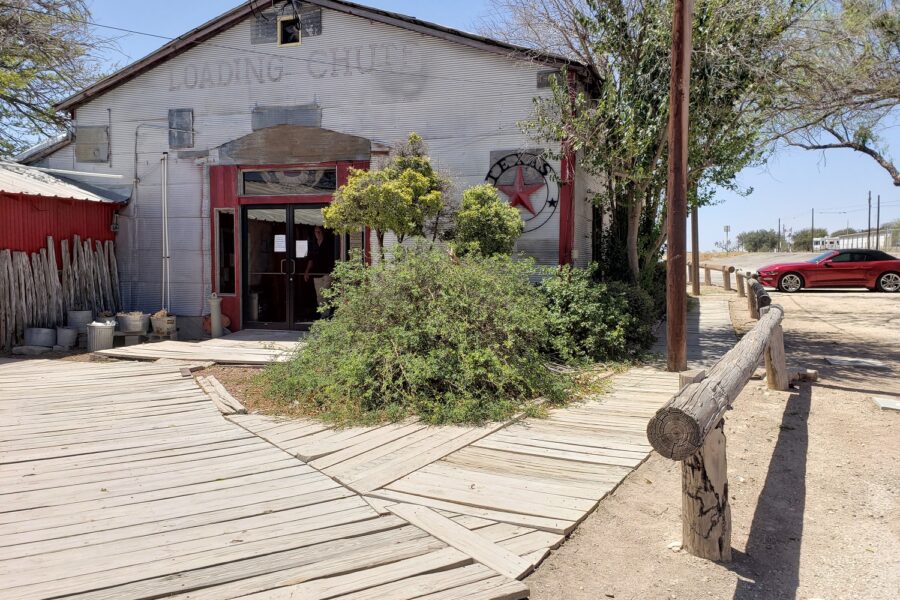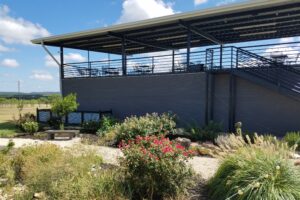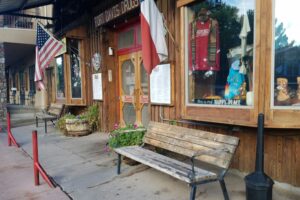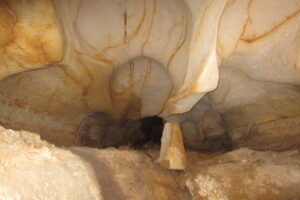West Texas Bound
I look at Michael and ask, “How fast are you driving?”
“The speed limit,” He answers.
It’s been a while since we have been on the twisting, curving Hill Country roads this early in the morning. I feel like my seat belt needs a seat belt. I wait for the straight smooth busyness of Highway 290 as we roll towards Marathon and our mini West Texas adventure.
After we pass the tourist-laden streets of Fredericksburg and blow through the tiny burg of Harper I glance up and see a lonely little cloud through our windshield. I tell Michael it looks like a mystical creature, and I snap a picture, texting my friends. I feel they too need to see this mystical vaporous vision. It puts me in the mood for enchantment.


The view on I 10 is straight and wide and empty on all sides. It is just the blue sky, unending vistas, rolling pavement, and us—and far too many semis marring the expansive views. At 11:30 we begin thinking about lunch and I check out our choices. Michael is hungry now. Since I see nothing available NOW, I suggest we wait another 52 minutes and try a restaurant in Odessa—The Hitching Post.
Odessa – The Edge of West Texas
We normally whiz by Odessa’s outskirts on the highway, but today we take the business route through town and I’m charmed. Here is a small town that is surviving, perhaps thriving. Gracious old two-story homes are still standing and well cared for, while the business district buzzes with activity. Approaching the spot where Google Maps shows me our restaurant of choice is located, I am delighted to see an abundance of vehicles parked in front.
“Michael, it’s open and popular!”
For us, this is a double bonus. I can’t count the number of restaurant misadventures we have had on trips. Often, even though Google says open, we arrive only to see a sign hanging in the window shouting, “CLOSED!” It is almost funny. We never expect our first choice to fling open the doors in welcome.
The Hitching Post
Michael parks our car near the west end of The Hitching Post Steak House, directly in front of the forever-long hitching post that spans the length of the circa1950s edifice. Originally built as a sheep barn, it was turned into a restaurant by the same family. Approximately 40 years later that family sold it to a couple who continues the tradition of serving country comfort food to locals and visitors just passing through.
From the outside, it looks like an old sheep barn, all higgledy-piggledy and wired and taped and nailed together; but all of the pieces forms a charming whole. Although the parking lot seems full, the interior is not crowded. After walking through double glass doors—replacing the earlier loading chute for the sheep—we choose a table in the back room that faces the highway.



The table adjacent to the one where we are sitting is filled with six voluble, burly individuals, some of them wearing matching blue shirts with an insignia I cannot read. Michael tells me they are oilfield workers, some of them from out of town, one from Corpus Christi. After eavesdropping a while I turn my attention to the newspaper print menu.


Lunch
I’m really not thinking about an appetizer, but Brussels sprouts always catch my eye. Meanwhile, the server appears and Michael says we’ll have a half order of onion rings. How can I argue with that? I order Texas fried fish with unlikely sides and iced tea. The onion rings are set on the table, thin and crisp and piled high. They remind us of snacks after a fraternity party or a dance or a burger and shake date too long ago to name the year. Munching on the fried decadence I begin reading the newspaper-menu front and back. It is a great way to while away the time while we wait for our lunch, and it is more than informative. From Davy Crocket to the history of Ozona to angora goats and sheep raising to oil and gas discovery and production to fishing and hunting; it’s all here!


Lunch is country cooking at its best. I could be sitting at Grandma’s dinner table, but fried fish was NEVER on the menu; vegetables and potatoes always were. The fried fish is well seasoned, too plentiful to eat it all, and fried to a perfect crispness. The vegetables taste as if they came from a country kitchen, not a high-end restaurant that are barely cooked—which is a good thing.
The Road to Sanderson
Back on the road, we drive on, letting miles and miles of West Texas slip behind us. Michael read an article on Sanderson earlier this week; he wants to see it. So, we leave wide and busy I 10, heading south on Texas 349 which equates to 60+ miles of lonely. We see ONE car as we drive south toward history, and I wonder why they laid this long empty stretch of pavement.


A Pile of Bones in the Dessert of West Texas
The opening salvo that piqued Michael’s interest in Sanderson came from an article in Texas Monthly magazine.
“Driving into the tiny West Texas town of Sanderson feels a bit like finding a pile of bones in the desert—intriguing, but you might at first be reluctant to look more closely. An hour’s drive southeast of Fort Stockton, this far-flung community of about eight hundred residents is a little rough around the edges, but if you take the time to get to know it, you’ll be glad you did.”
Pam LeBlanc, Texas Monthly, February 2021



Judge Roy Bean
Michael and I love old, and I don’t mind a little decay around the edges. Decay and weathered and worn tells me there are stories here. You just need somebody to tell you about them. I see the name Roy Bean in the article—another memory from my childhood. My father was so intrigued by the man and his stories that he piled his three young daughters and possibly reluctant wife, into a car without air-conditioning during a hot Texas summer and drove us to Langtry so we could see where Judge Roy Bean held court.
But back to Bean, according to legend, before Roy Bean became infamous as a self-appointed judge in Langtry, he opened a bar in Sanderson and was run out of town by the local competition when they infused Roy Bean’s booze with coal oil; he soon moved eastward to Vinegarroon and Langtry. Bean’s departure later earned Sanderson the name, “Town Too Mean for Bean.”
Sanderson
Michael drives in squares, circling outward, looking at the pile of bones of what was. There are still businesses in this town of approximately 774; and a large school is located close to the foothills that edge the northern boundaries of Sanderson.



Sanderson was both the beneficiary and the victim of progress. Its growth spurt began with the construction of the Galveston, Harrisburg, & San Antonio Railroad circa 1881. Then came Highway 90 which became the main “coast-to-coast” route through the area, ensuring a steady supply of auto traffic. The forecast of Sanderson’s imminent demise came when disaster struck in 1965 in the guise of a flash flood when a wall of water poured through Sanderson Canyon into town; the railroad changed its vision eventually moving all of its crew operations to Alpine; the killing blow came with the completion of I 10 in the 1970s. The story is more complicated than that, but the ending is the same.
Circling through Sanderson one last time, we say goodbye to the sad story wrought by progress and set our sights on Marathon, and Michael’s dream of sitting in the backyard of a 100-year-old adobe house listening to the musical sounds of the rails as freight trains roll through town.









Leave a Reply
Your email is safe with us.